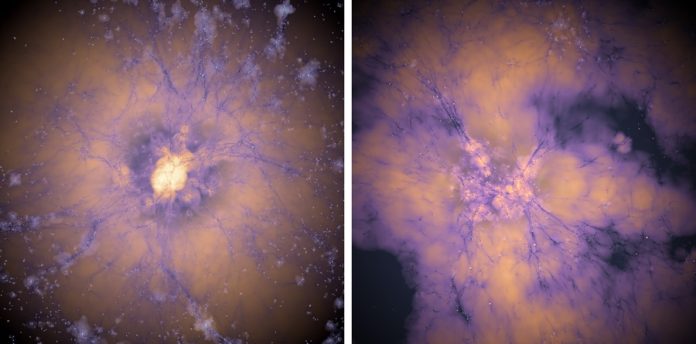
Physicists from MIT have proposed that a mysterious force called “early dark energy” could help solve two of the biggest puzzles in our understanding of the universe.
These puzzles involve how fast the universe is expanding and why astronomers are seeing so many bright galaxies that shouldn’t have formed so early.
One of the puzzles is called the “Hubble tension.” This refers to a disagreement between measurements of how fast the universe is expanding.
The other puzzle arises from recent observations of early, bright galaxies, discovered by NASA’s James Webb Space Telescope (JWST). These galaxies existed at a time when the universe was very young and shouldn’t have been as populated or bright according to current models.
The MIT researchers suggest that both puzzles could be explained if a mysterious force, known as early dark energy, briefly existed in the early universe.
Dark energy is already known as a strange form of energy that scientists believe is driving the expansion of the universe today. Early dark energy, however, is a hypothetical version of this force that might have briefly accelerated the expansion of the universe soon after the Big Bang, before disappearing.
Some scientists had already suspected that early dark energy could help explain the Hubble tension because it would have caused the universe to expand faster in its early stages, potentially resolving the mismatch in measurements. The MIT team has now found that early dark energy could also explain the surprisingly high number of bright galaxies detected in the early universe by the JWST.
In their new study, published in the Monthly Notices of the Royal Astronomical Society, the researchers modeled how galaxies formed in the universe’s first few hundred million years. When they added early dark energy to their model, they found that it could explain the unexpectedly large number of galaxies that formed early on.
Physicist Rohan Naidu from MIT explained that early dark energy might be the missing ingredient needed to solve these two major problems in cosmology. “It’s a very elegant and simple solution to both the Hubble tension and the mystery of early bright galaxies,” Naidu said.
The team, led by Xuejian (Jacob) Shen, also included physicists from the University of Texas at Austin and the University of Cambridge.
When the JWST looked deep into space, it saw a large number of bright galaxies that existed when the universe was only 500 million years old — a period when the universe was just 3 percent of its current age. According to current theories, the universe should not have formed such large and bright galaxies so quickly.
To investigate whether early dark energy could be the cause, the MIT team focused on how dark matter — an invisible substance that makes up most of the universe — affects galaxy formation. Dark matter gathers into structures known as halos, which serve as the “skeleton” of the universe. Galaxies form within these halos.
The researchers developed a framework to predict how many galaxies should have formed in the early universe based on different cosmological factors, like the universe’s expansion rate. When they added early dark energy into the mix, they found that it created larger dark matter halos, leading to the formation of more bright galaxies.
This new discovery shows that early dark energy may have had a significant impact on how the early universe evolved. While more research is needed to confirm the connection, it offers a promising explanation for these two big cosmic mysteries.
As MIT professor Mark Vogelsberger said, “We demonstrated the potential of early dark energy as a unified solution to the two major issues faced by cosmology. This could be evidence for its existence if future observations confirm these findings.”
The research was supported by NASA and the National Science Foundation.



